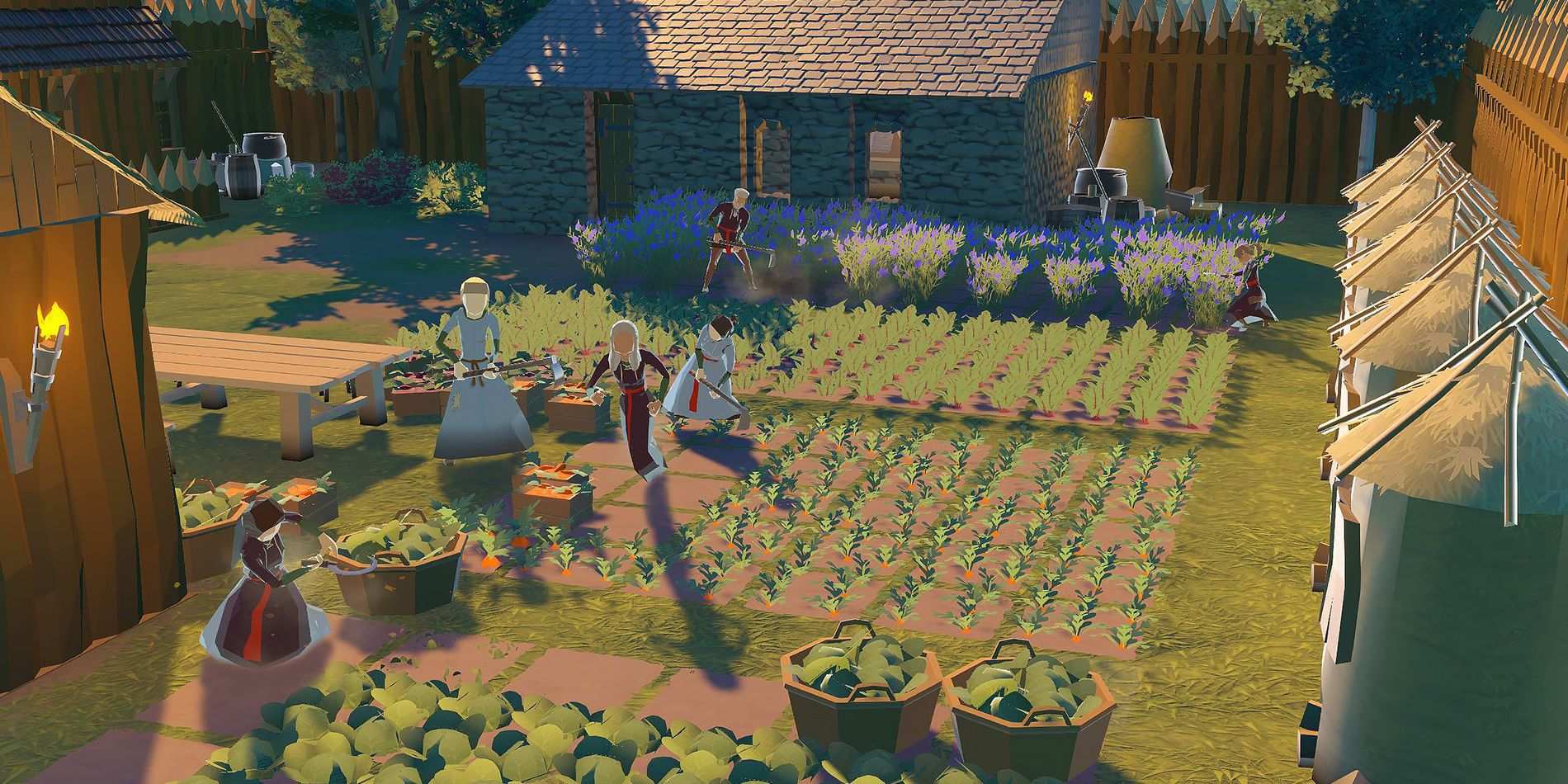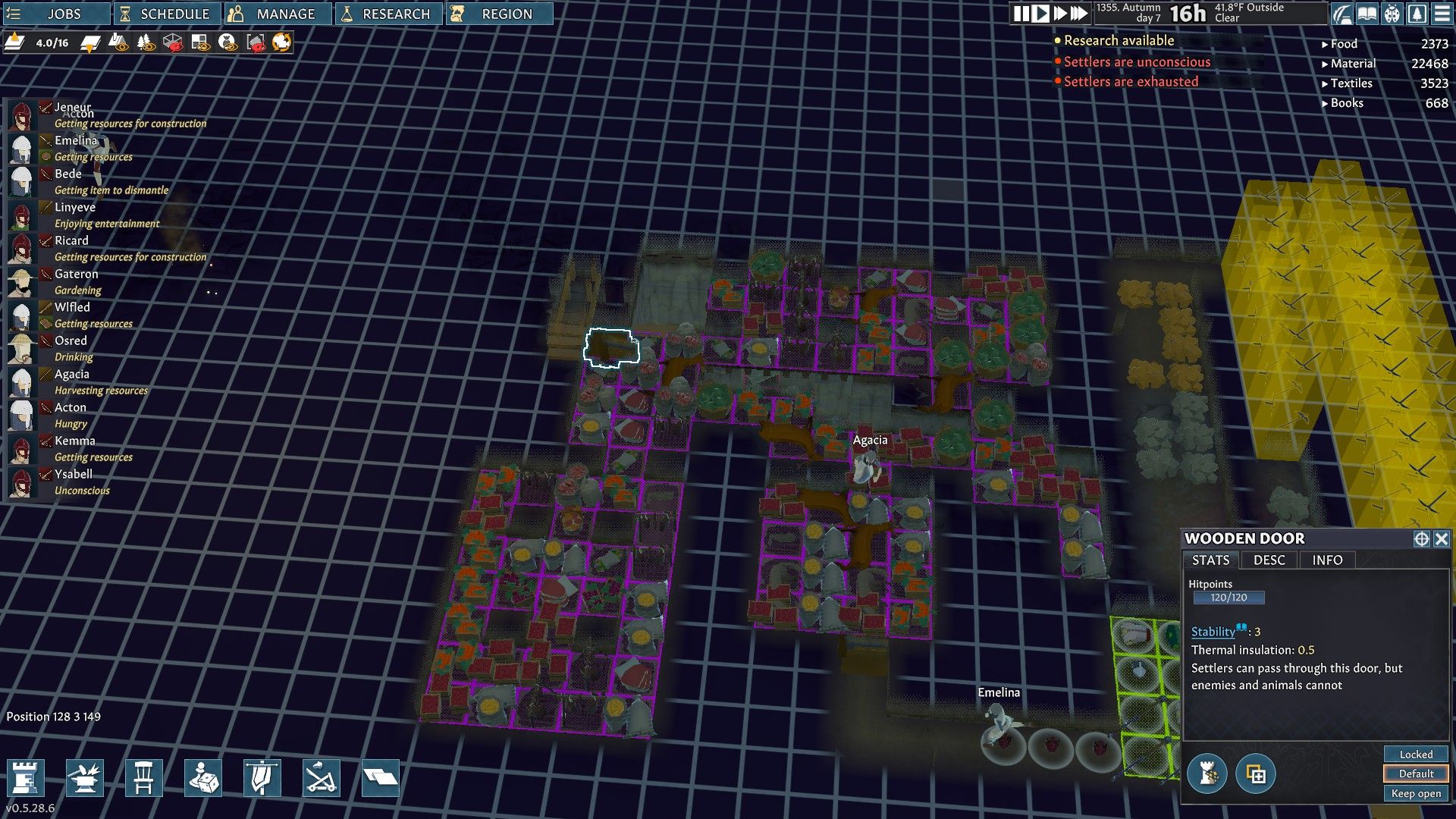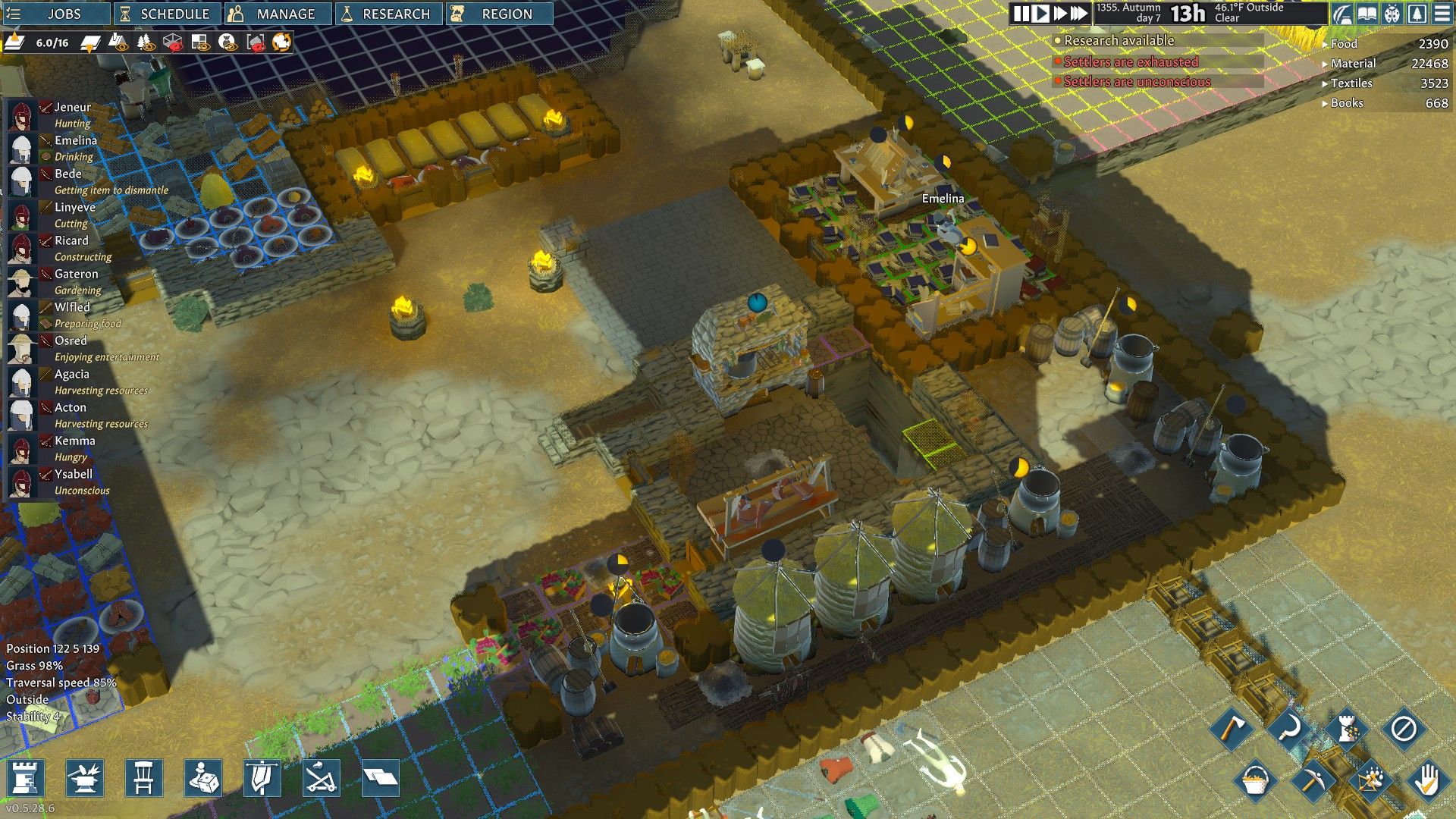Going Medieval has just released into early access on Steam. The game offers a mix of construction simulator and survival gameplay. Players have the choice of how challenging they want the overall experience, from simple farming life to a storm-filled world plagued with enemy invaders and wild wolf packs.
While it can feel overwhelming at first, to get started in Going Medieval, players should aim for the necessities in life: food, shelter, clothing, and good health. To help facilitate this, players will want to have a large amount of storage to sort out their supplies and prevent them from rotting away. Storage can be built underground to prevent fast decomposition and ensure the village has enough provisions to last the winter.
Cold Storage in Going Medieval
Underground storage in Going Medieval is useful, as it clears items from the main levels of a settlement and is typically cold enough to keep items fresh and free from decomposition for most of the year. Any settler can get the job done eventually, but to speed up the process it is best to start with workers that have at least a skill level of 10 and possibly a one-star or greater rank in Mining or Construction. It is also good to set these tasks to priority one at first.
Storage location
Refrigerated storage should be relatively near a village’s kitchens, breweries, farms, and medical facilities. This will help save settlers’ time when traversing in their daily lives. However, it should not be directly underneath any building, as the residual heat from both the active appliances and materials will make the storage hotter. Similar to Valheim's building stability system, there is also the possibility for stability issues, which could cause buildings to collapse if the earth is dug up too soon without support. It is best to place the underground storage somewhere that will never have anything on top. For its depth, aim for at least two layers downward in a valley or hillside, but possibly up to four or five if playing on a high mountain map.
Storage materials
Every building material in Going Medieval has an insulation value, which helps heat up buildings during freezing winters. This value will therefore be detrimental to a location that is meant to be cold. This means that the overall use of materials should be limited, especially those that have high insulation. The walls of underground storage should use only the natural dirt tiles, as even clay and limestone will overheat the storage. There will need to be a constructed floor to prevent dirt rot. All ground tiles currently have the same insulation, so the material choice does not matter much. However, because each piece of flooring will add heat, it is best if storage is only one or two building levels tall.
Players will also want to mostly construct any stairs out of wood. The material itself has no benefit or penalty, but the scaffold layout means it can be placed on top of loose items on the ground, like stone that was mined but fell below. Clay and brick stair blueprints will not present an error message, resulting in settlers never building those stair types if they are currently obstructed.
Finally, a door is needed to separate rooms and regulate the temperature. A simple wooden door is most common. However, if players expect the storage to be attacked during a raid or purposely want to make it a defensive location then an iron grated door is great for allowing lancers to attack through. Alternatively, a reinforced door can keep raiders occupied with its extra hitpoints.
Storage layout
The layout of underground storage is very important, as stability values will prevent cave-ins and other construction problems. A single patch of natural dirt can easily hold up three tiles in any direction above it. So for the best overall stability, players should leave some natural dirt or stone columns in the middle of their storage. Another option is to place wooden beams - which can support up to 10 tiles above them - but this can take some careful planning as a collapse could happen before a beam is placed. Currently, wood beams do not add insulation, but this could change as Going Medieval's Early Access period continues.
When digging, only assign the furthest titles first. If settlers dig too close to the only land connections, they may become stranded in place and starve or pass out from exhaustion. Other settlers can construct temporary land bridges or stairs to rescue trapped workers, but it is best to avoid this potential problem before it happens.
Players will also need to leave three tile rows for any additional staircases leading into or out of storage. However, too many building levels in a single storage unit may cause overheating due to the flooring.
Stockpile Priority and Hauling in Going Medieval
Once the storage area is built, players can begin using it. First, they will need to clear any excess clay, stone, iron, or gold cluttering the floor. Settlers may do this on their own accord, but only if there is an open stockpile available for such materials. If these resources are not moved, the settlers may not fill the storage with other items.
Stockpile modification
The cold storage should be used for items that have a low shelf-life of only a few days to a week. This includes cabbage, carrots, mushrooms, redcurrants, herbs, and raw meat. Longer-lasting items like beets, barley, smoked meat, animal carcasses, raider corpses, and medical kits should only be assigned if there is ample space. If players wish, they can assign multiple stockpiles with different requirements across the whole room. Full meals can be excluded from storage, as settlers should be consuming those daily. Preserved foods like pickles, rough wine, ale, and beer do not need to be in storage as they are already preserved indefinitely, as long as they aren’t kept directly on dirt floors.
Hauling settler
Players will want to have at least one or more settlers whose only main job is to haul goods. Even with this option set, they may need to be ordered several times. Often, the settler’s AI will pick up a single item when their pack can hold up to an entire 60 kilograms. Inputting a second command will force them to completely fill their bag with the item type. Eventually, the storage will be filled and ready for use.
Going Medieval is currently in early access on PC.



